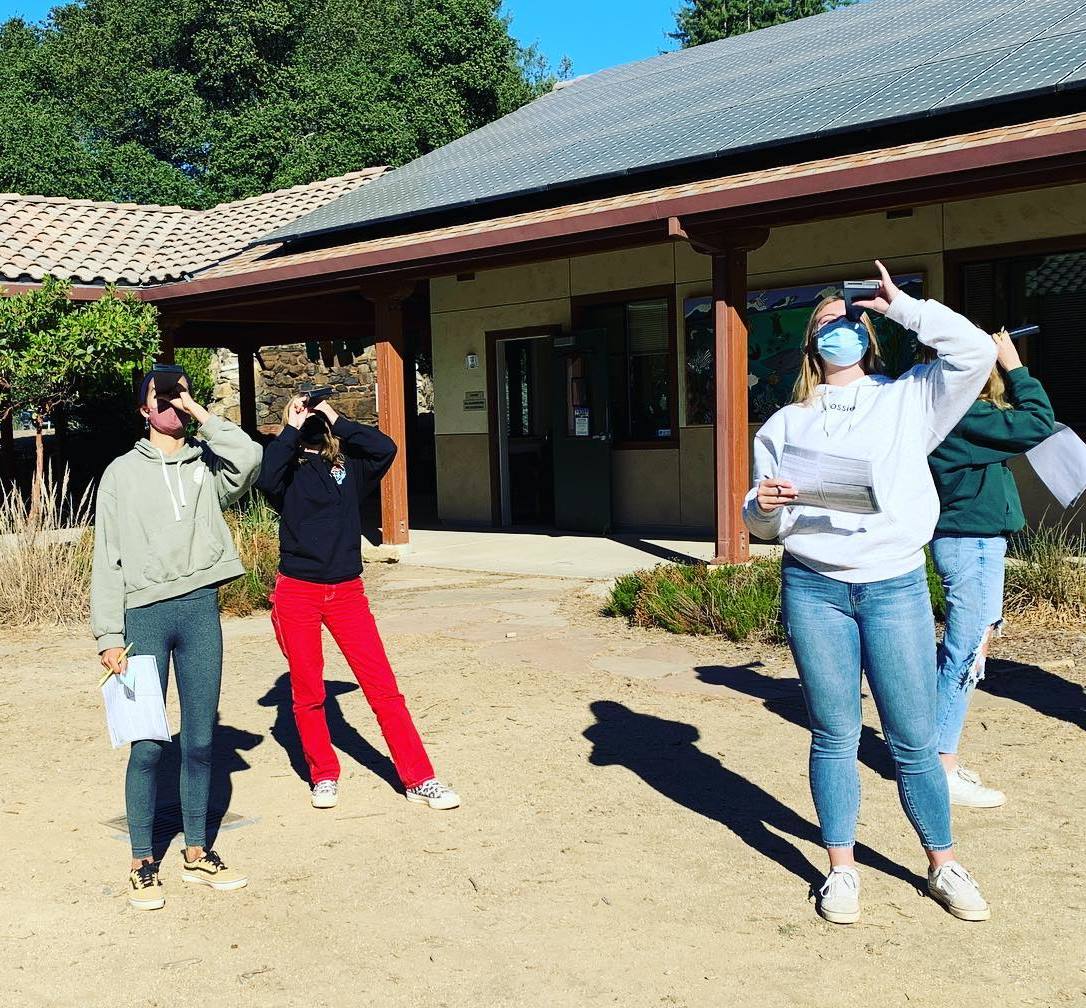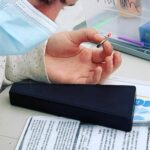 On a recent afternoon at Mount Madonna School (MMS), high school students spread out near their outdoor classroom to
On a recent afternoon at Mount Madonna School (MMS), high school students spread out near their outdoor classroom to 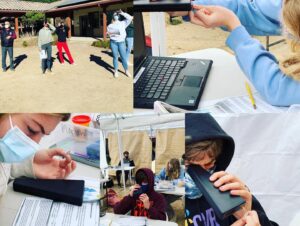 measure the wavelengths emitted by superconductors, calibrating their own spectrometers in the sunshine, six feet apart.
measure the wavelengths emitted by superconductors, calibrating their own spectrometers in the sunshine, six feet apart.
“While most of my class was there in person,” shared teacher Lisa Catterall, “what amazed me was that I had a student on Zoom, and his lab partner in the tent held the spectrometer to the computer camera and he could read it! I am grateful for curious students and the confidence this community gives us to innovate.”
The students were looking at light emitting diodes (LEDs). LEDs are usually colored by superconducting compounds that produce different wavelengths of light when excited by electrical energy, Catterall explained. While some LEDs are white with a colored plastic cover, just like old fashioned holiday lights, most are colored by chemistry.
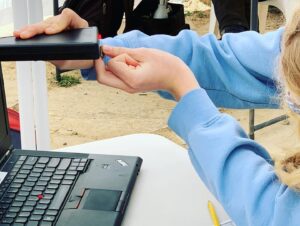 The tenth grade chemistry class recently completed studies of electromagnetic radiation and electron configuration, both of which require a basic understanding of quantum mechanics.
The tenth grade chemistry class recently completed studies of electromagnetic radiation and electron configuration, both of which require a basic understanding of quantum mechanics.
“Measuring the wavelength of visible light allows students to tie the concept of quantum leaps by excited electrons to something they can see and quantify,” said Catterall. “Scientists use spectroscopy as a tool to study the structures of atoms and molecules in excited states. Chemical engineers, in an example from this activity, would use it to design superconducting compounds that emit new, cheaper or more sustainable colors for use in lights for consumers or industry.”
Catterall redesigned this lab for safe performance outdoors and with a 1:1 ratio of lab equipment to students. Eleventh grade physics students will also get a chance to use these equipment setups, as they study visible light from the perspective of how waves move. The equipment, of course, will be thoroughly sanitized it moves to a new class area.
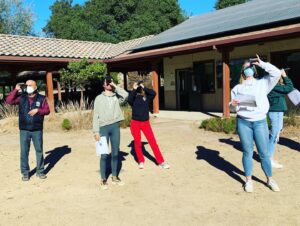 “Parents may remember doing flame tests in high school chemistry to identify elements; this is something we can’t do in our tent,” said Catterall. “I do, however, plan to use this lab in exactly this way in future years, whether we have access to the lab or not, because it gives the students a more complete understanding and allows quantitative measurement of spectra. I appreciate the investment the school is making in lab equipment for each student. Each tenth grader has their own personal lab kit box, and each week I feel like I’m packing them ‘learning lunches’ as I add the equipment and supplies. It’s been a fun creative challenge.”
“Parents may remember doing flame tests in high school chemistry to identify elements; this is something we can’t do in our tent,” said Catterall. “I do, however, plan to use this lab in exactly this way in future years, whether we have access to the lab or not, because it gives the students a more complete understanding and allows quantitative measurement of spectra. I appreciate the investment the school is making in lab equipment for each student. Each tenth grader has their own personal lab kit box, and each week I feel like I’m packing them ‘learning lunches’ as I add the equipment and supplies. It’s been a fun creative challenge.”
###
Contact: Leigh Ann Clifton, director of marketing & communications,
Nestled among the redwoods on 375 acres, Mount Madonna School (MMS) is a community of learners dedicated to creative, intellectual, and ethical growth. MMS supports its students in becoming caring, self-aware, discerning and articulate individuals; and believe a fulfilling life includes personal accomplishments, meaningful relationships and service to society. The CAIS and WASC accredited program emphasizes academic excellence, creative self-expression and positive character development. Located on Summit Road between Gilroy and Watsonville. Founded in 1979.

